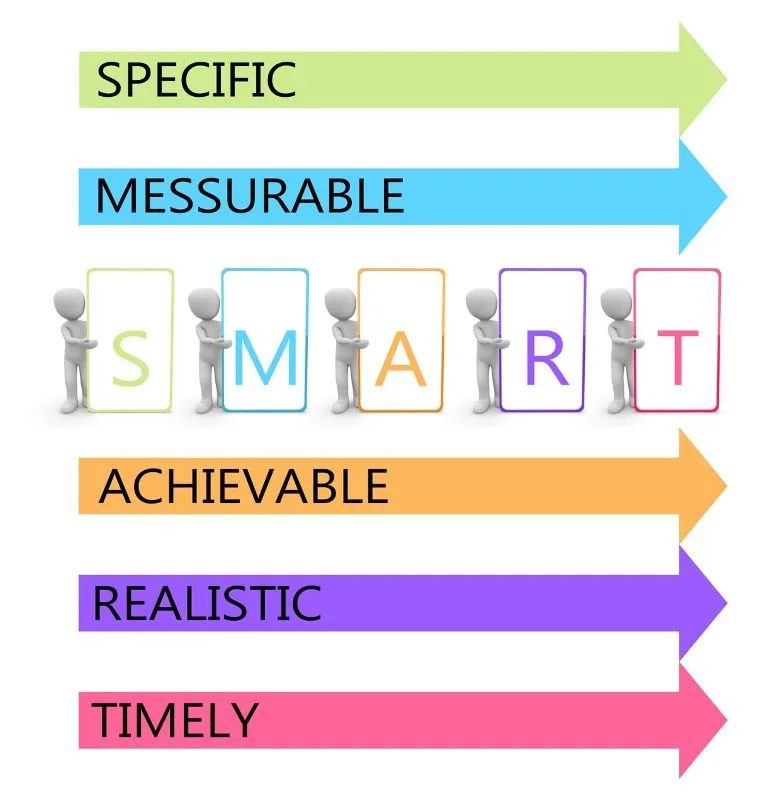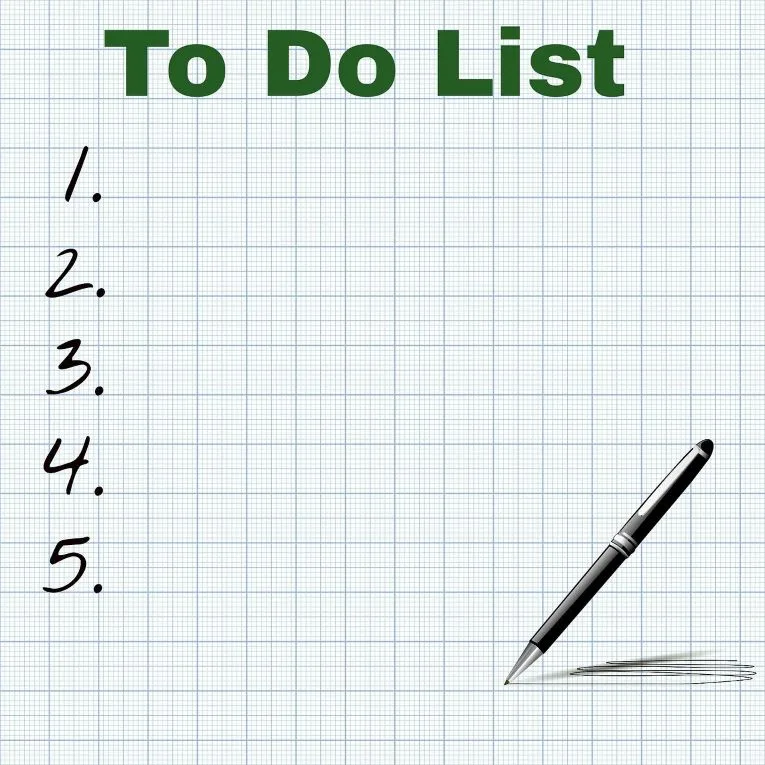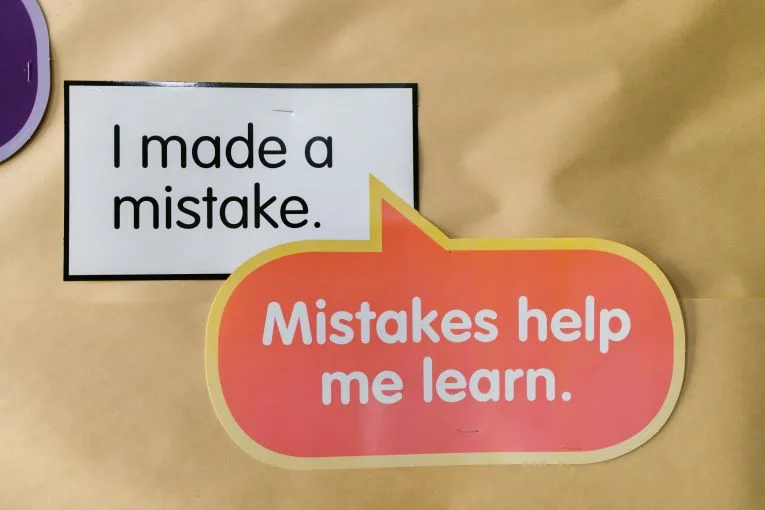As a student, you might have been asked by your teachers or elders to set a goal in life and then take action to achieve that goal. Have you heard the quote, “A person without a goal is like a ship without a rudder?”
Upon hearing or coming across such statements, you may wonder what a goal is, how to set a goal, why it is important to set a goal, how to set a definite goal, and so on. To answer all these burning questions on goal setting and the importance of setting a goal, we have curated this article.
In this blog post, we will discuss why setting and achieving goals is crucial for students and provide practical insights to help students turn their aspirations into reality. In this comprehensive guide, we’ll delve into various aspects of goal-setting, from understanding personal motivations to celebrating achievements.
We hope you will love it and find inspiration from this piece of information.
Importance of Goal-Setting for Students – How To Set A Goal
Let’s talk about why setting goals is a big deal for students. As humans, we all have dreams and the power to turn them into reality. But here’s the catch – your dream should be solid, something totally worth going for. We call this a definite goal or a smart goal.
Now, if you start setting goals during your school days, you’ve got more time to plan. It’s like making a to-do list or a roadmap to get where you want to be. Having a goal for your career brings you motivation, a sense of direction, and a purpose in life. It makes your journey more satisfying and fruitful.
In the book “Think and Grow Rich,” the awesome author Napoleon Hill talks about desire as the starting point for achievements. But it has to be a clear desire. Combine that with a strong belief, and you’re one step closer to your goals. If you can spare some time, give that book a read – it’s worth it.
So now you get why having a goal is a big deal and why setting a career goal matters. By the end of this article, you’ll know how to set a goal for your career and take steps to make it happen.
And hey, if you haven’t checked out our guide on picking the right career after 12th, give it a read. It’ll help you understand the steps for choosing the right career. This article is all about building a roadmap to reach your career goal.
Steps on How to Set a Goal For Career
1. Identify Short Term and Long Term Goals

Let’s break down goals into short term and long term. Step one in setting goals is figuring out what you want to achieve soon and what’s the big picture down the road. Your career goal is the long term one, and the tasks you do to reach it are the short term goals.
Imagine you want to be a journalist – that’s your long term goal, happening over a few years. But the day-to-day stuff you do to make it happen, like finishing a book in a week, getting assignments done on time, and other tasks within a week, month, or a few months, are your short term goals.
So, the trick is to know your goal types and jot them down. This way, you can plan and nail them one by one. Easy, right?
2. SMART Goal Setting

SMART goal setting is a term cooked up by George Doran, Arthur Miller, and James Cunningham in their article “There’s a S.M.A.R.T. way to write management goals and objectives.” It’s a nifty concept for making your goals clear and focused, helping you figure out what to do and how to do it.
“S” For Specific Goals
Let’s dive into the first part of SMART: Specific Goals. The ‘S’ means your goal should be specific – not just a vague idea in your head. Ask yourself questions like what you want and why. Once you answer these, your goal becomes specific.
For example, instead of saying, “I’ll improve my communication skills,” try, “I’ll acquire the skill of communicating with people in the next 30 days by learning spoken English and joining available courses.” See the difference? This statement gives you a clear picture of what you want to achieve and when. Smart, huh?
“M” For Measurable Criteria
Now, let’s talk about the ‘M’ in SMART: Measurable Criteria. Make your goal quantifiable so you can track progress easily and stay focused. Studies show that measurable goals have a better shot at success than vague ones.
Take weight loss, for example. Saying “I’ll lose weight soon” is pretty unclear. But if you say, “I’ll shed two kilograms in the next 30 days,” now you can track your progress daily. Much clearer, right?
“A” For Achievable Objectives
Moving on to ‘A’: Achievable Objectives. Your goals should be doable, not fantasy-based. Setting a goal like losing 10 kg in 10 days? Not achievable, and you’ll likely end up feeling disappointed. Make sure you have the time, resources, and energy for your goal – that’s the smart way to set goals.
“R” For Relevant Aspirations
The next thing you have to consider is whether the goal you set is relevant to your long-term aspirations. Is what you are trying to achieve today valuable to your career? Is it really worth your time, resources, and energy? If your answers to these questions are positive, then you can focus on achieving that particular goal.
“T” For Time-Bound Deadlines
The next thing you have to be conscious of is that your goal should be time-bound. If there is no deadline, your mind may procrastinate and keep delaying the job. You must complete the task within the stipulated time to move to the next step. Otherwise, you will be in a never-ending loop of procrastination and can’t achieve anything.
3. Breaking Down Goals into Tasks

Students who set bigger goals with a longer time frame can break down their goals into smaller tasks, making them easier to track and achieve. Having a bigger goal can be overwhelming and make it difficult to manage progress. However, if you break your goals into steps and complete them one by one on a daily basis, you can easily reach the target.
For instance, setting a goal to complete a book in 30 days brings less clarity than setting a goal to read five pages daily. This creates urgency and motivates you to do it everyday, eventually leading to completing the book in 30 days.
In the case of broader goals, you can prioritize important tasks and finish them first before tackling the less important ones.
4. Overcoming Procrastination

Procrastination is the biggest problem that everyone faces when they are on a path to achieve their goals. This usually happens when we get distracted while doing something. Distraction can be caused by social media, situations, your habits, or your thoughts.
Additionally, procrastination can happen if the timeframe to achieve a particular goal is too long. In this case, your mind will keep delaying your job, saying that there is time to achieve the goal, so spend some time on entertainment.
Therefore, you have to apply different strategies to combat procrastination and perform all your tasks to reach your goal faster. The first strategy is to write down your tasks for the day and complete them at any cost.
There is also another strategy that you can follow to stop procrastinating. This is the Pomodoro Technique, and here is a quick explanation of it for your understanding.
What is Pomodoro Technique?
The Pomodoro Technique is a method of focusing on tasks for a shorter time frame and taking breaks in between. “Pomodoro” is the Italian word for tomato. This approach enables you to accomplish more tasks in less time and helps avoid procrastination.
In this technique, you choose a task, set a timer for 25 minutes, work on that task until the timer is up, and then take a break for 5 minutes. After completing four tasks or Pomodoros, you can take a longer break of 15 to 30 minutes. If you want to learn more about this technique, you can click here.
Apart from the Pomodoro Technique, another method to combat procrastination is known as the Two-Minute Rule. In this method, you break a big task into small ones that can be done in two minutes. After that, you can complete these tasks one by one. Learn more about this technique here.
5. Time Management Techniques

Another crucial aspect of managing your goals is to manage your time effectively. Everyone has 24 hours in a day, and arranging all tasks within this time frame can help achieve everything you want.
Essentially, you need to allocate dedicated time to certain tasks that are necessary for your goals and consistently follow through.
The Pomodoro Technique and the Two-Minute Rule technique can also aid you in time management. In addition to that, there are several tools and apps available that you can use to manage your time efficiently. These tools can assist in organizing tasks and tracking your progress.
6. Learning from Setbacks

When you have a definite goal and are on the way to achieving it, you may face several setbacks and failures that you have to overcome to keep moving forward. This is where you need to be more productive and look for opportunities in your failures. Maintain a positive mindset and try to learn from your challenges, which will contribute to your personal growth and resilience.
Additionally, learn to be flexible with your goals, as over time, the goal may be less important to you or need to evolve. If circumstances change, don’t hesitate to adjust your objectives to better align with your evolving aspirations.
Consider this example: Suppose you set a goal today to be a content writer, and after a few days or weeks, you realize that the scope for content writing has decreased due to the revolution of AI. In this situation, you have to think of alternate options, such as blogging, keyword research, etc., instead of getting depressed.
7. Celebrating Achievements

We all love rewards and praise, so remember to praise yourself when you achieve a goal and take a step forward. For instance, if you set a goal to read a chapter of a book in two days and accomplish it, acknowledge your progress. Doing so will keep you motivated throughout the process.
If you feel demotivated at some point in your life, this attitude will help you stay happy and motivated. In addition to that, you can adopt any quote or personal mantra as your driving force, which will assist you in challenging situations.
8. Balancing Academic and Personal Goals

As a student, your goals can be either academic or personal, and it is important to balance both to reap the overall benefits of your goal-setting. You need to allocate dedicated time to your academic and personal goals to achieve the best outcomes.
Academic goals may include completing assignments, achieving higher positions in exams, and reading a book, among others. On the other hand, personal goals may involve maintaining a healthy life, ensuring physical and mental well-being, and so forth. As you can see, by achieving personal goals, you enhance your health and the ability to achieve other goals.
9. Reflection and Reassessment
Your goals need periodic review and alignment with your current priorities and aspirations. As you grow and evolve, your mind undergoes changes, and you gain exposure to new things and technologies. Consequently, your priorities may shift, requiring you to realign your tasks to make it easier to achieve your goals.
10. Real-life Success Stories

You can gain guidance and motivation to achieve your goals by learning about real-life success stories of students. This will provide you with insight into how individuals have navigated the same path you are on now and what they have done to reach their goals. By doing so, it will be somewhat easier for you to achieve your own goals.
Create connections with others who share similar goals and observe how they plan their tasks and accomplish them. By understanding other people’s opinions and interests, you will find motivation and inspiration on your journey.
11. Mistakes Students Make When Setting Goals

Students can make various mistakes when setting goals, and one of the most common ones is setting unrealistic goals. As mentioned earlier, a goal should be specific and achievable, allowing one to focus and attain it. However, setting goals that are overly ambitious and unrealistic can lead to frustration and demotivation.
Another mistake that students make is solely focusing on the results of a goal. While results are important, being solely result-oriented deprives you of enjoying the journey of reaching the goal. Instead of fixating on results, it’s beneficial to focus on the learning and growth you will experience throughout the process of achieving your goal.
Final Verdict on How to Set A Goal
Setting and achieving goals constitute a transformative journey. By comprehending your motivations, implementing SMART goals, and maintaining resilience in the face of challenges, you lay the foundation for both personal and academic success. These strategies will also assist you in planning your career in a productive manner.
We believe that the tools and insights shared in this guide will empower you in your goal-setting journey with confidence and determination. Don’t forget to share this post with anyone who is in the process of goal-setting so that they can apply valuable strategies in their own journey.
FAQs
How often should I review my goals?
It is advisable to regularly review your goals, aiming for a monthly or quarterly assessment to ensure alignment with your evolving priorities. This will help you stay updated with the latest trends.
What if I encounter unforeseen challenges?
Embrace challenges as part of the journey. Learn from them, adjust your goals if needed, and persevere.
Is it essential to share my goals with others?
While not mandatory, sharing goals with friends or mentors can provide valuable support and accountability.
How can I stay motivated during tough times?
Discover sources of inspiration, whether it’s from motivational quotes, success stories, or personal mantras. These can be powerful tools to keep you motivated when facing setbacks.
Is it okay to modify my goals as I grow and change?
Absolutely. Goals should adapt with you. Be open to adjusting them based on your personal growth and evolving aspirations.
Why is it important for students to set goals?
Students should set goals for several reasons. Goal-setting gives them direction, motivation, and a roadmap for personal and academic growth. It helps students stay focused, manage time efficiently, and develop vital life skills like resilience and decision-making.
Goals act as measurable milestones, fostering a sense of achievement and boosting self-confidence. In essence, setting goals empowers students to plan for their future, improve their academic performance, and succeed in various aspects of life.
What is a SMART goal for a student?
A SMART goal for a student is one that is Specific, Measurable, Achievable, Relevant, and Time-bound. For instance, a SMART goal could be: “To boost my math grades by 10% in the next semester by dedicating 1 hour daily to practice problems and seeking help from the teacher during office hours.”
This goal is specific in targeting math grades, measurable by a 10% improvement, achievable with a realistic plan, relevant to academic success, and time-bound within the next semester.
How do you assess goals?
Assessing goals involves evaluating progress and accomplishment using various methods such as quantitative metrics, qualitative assessments, key performance indicators (KPIs), checklists, feedback, timelines, objective criteria, data analysis, and comparisons.
By utilizing these tools, individuals can track and evaluate their advancement toward specific objectives, ensuring they stay on track and meet their goals within the defined parameters.
Discover more from Technical Studies
Subscribe to get the latest posts sent to your email.
